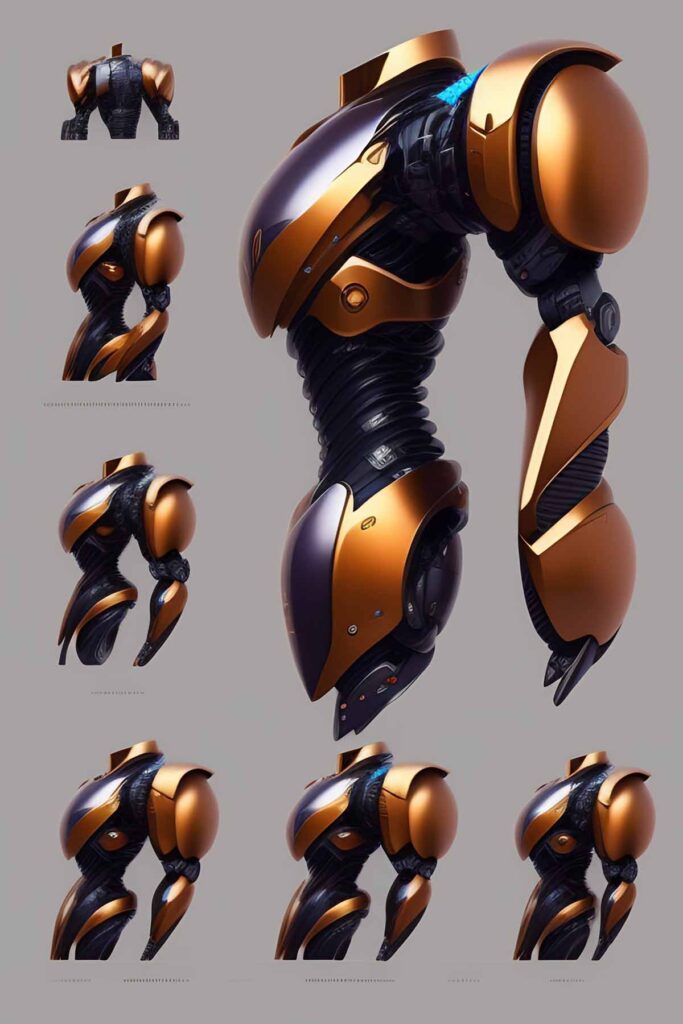In an age where technological advancements are becoming increasingly astonishing, the fusion of artificial intelligence and robotics has yielded extraordinary results. AI, or Artificial Intelligence, is reshaping the world as we know it. Gone are the days when building a robot from scratch was a laborious, time-consuming endeavor. With the groundbreaking emergence of AI technology, we now find ourselves in a world where robots can be designed and constructed in mere seconds.
AI: The Mastermind Behind Rapid Robot Design
The synergy between AI and robotics is transforming industries and opening up new possibilities. But how does AI accomplish the feat of creating functioning robots in seconds? The answer lies in the power of machine learning algorithms, vast data sets, and intelligent programming.
Machine Learning: The Key Driver
Machine learning is the cornerstone of AI’s ability to create robots quickly. AI systems are fed an extensive array of data, from existing robot designs to materials and performance data. These algorithms process this data, identifying patterns and trends that guide the creation of a robot optimized for its intended purpose.
Data-Driven Design
The data sets used for designing robots are comprehensive and diverse. They encompass everything from mechanical specifications to sensors and software capabilities. This data-driven approach ensures that robots are not just created quickly but also tailored to specific needs, resulting in efficiency, precision, and cost-effectiveness.
The Process of AI-Enabled Robot Design
To better understand how AI creates robots in seconds, let’s delve into the streamlined process. AI-powered rapid robot design typically involves the following steps:
1. Data Collection and Analysis
In this initial stage, AI algorithms gather and analyze extensive data on existing robots, materials, and desired functionalities. The data acts as the foundation upon which the robot will be constructed.
2. Pattern Recognition
Machine learning algorithms identify recurring patterns within the data. These patterns serve as the building blocks for the robot’s design, from its physical structure to its software.
3. Design Generation
Once patterns are recognized, AI systems proceed to generate robot designs. These designs take into account various parameters, such as size, weight, and power efficiency, all aligned with the intended purpose of the robot.
4. Optimization
AI continuously refines the generated designs, aiming for optimal performance and functionality. It tweaks various parameters, fine-tuning the robot’s design until it reaches the pinnacle of efficiency.
5. Simulation
Before actual construction, the AI simulates the robot’s performance to identify any potential issues or areas for improvement. This step minimizes the risk of costly errors and ensures the robot’s reliability.
6. Construction
Once the design is perfected, it’s time for the physical construction of the robot. AI systems can even automate the assembly process, ensuring consistency and precision.
Benefits of AI-Enabled Rapid Robot Design
The marriage of AI and robotics carries numerous advantages, revolutionizing industries and making a significant impact on various sectors.
1. Speed and Efficiency
The most obvious benefit is the incredible speed at which robots can be designed and built. This translates to faster project completion, quicker product launches, and cost savings.
2. Customization
AI’s ability to tailor robot designs to specific needs allows for highly customized solutions. This leads to robots that excel in their intended roles and functions.
3. Cost Savings
By reducing design and manufacturing time, AI-enabled rapid robot design significantly lowers operational costs, making automation more accessible for businesses.
4. Innovation Acceleration
Innovation thrives in an environment where robot design is both rapid and versatile. Companies can experiment with new ideas and concepts without the fear of prolonged development cycles.
Industries Embracing AI-Enabled Rapid Robot Design
AI’s influence extends across a wide range of industries, all of which are benefiting from rapid robot design.
1. Manufacturing
In manufacturing, AI-designed robots are enhancing automation, increasing efficiency, and reducing production costs.
2. Healthcare
AI-powered robots are transforming healthcare by assisting with surgeries, performing tasks in hospitals, and even dispensing medication.
3. Agriculture
In agriculture, robots designed by AI are optimizing crop management, improving harvest efficiency, and reducing the need for manual labor.
4. Space Exploration
AI-designed robots are playing a vital role in space exploration, where they can withstand extreme conditions and execute complex tasks.
Conclusion: A Glimpse into the Future
The collaboration between AI and robotics is rewriting the rules of rapid robot design. What used to take months or years can now be achieved in mere seconds, thanks to the extraordinary capabilities of AI. This evolution is driving innovation, cost savings, and efficiencies across multiple industries. As we look forward to a future where AI’s role in robotics continues to expand, we can only imagine the endless possibilities that lie ahead.
